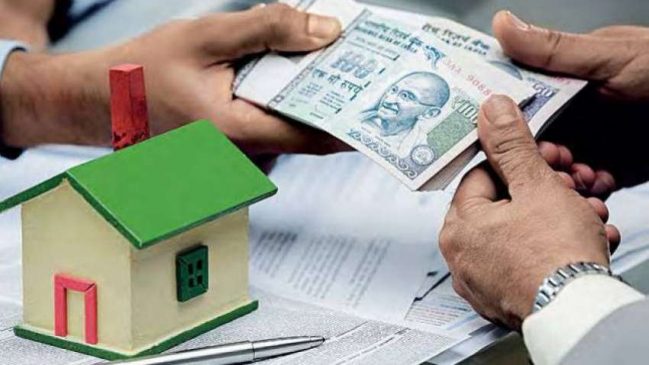EMIs or equated monthly instalments for home loan borrowers are set to rise with an increase in Marginal Cost of Funds based Lending Rate (MCLR) by leading banks of India. The rise in MCLR rates will not only affect individuals with loans but also companies and organisations who borrow money for their projects and investments.
State Bank of India has hiked the MCLR across tenors by 10 basis points (bps). The revision in MCLR rates came into effect from April 15 increasing the rate from 6.65 per cent to 6.75 per cent for overnight, one month and three-month tenors. Meanwhile, Bank of Baroda and Axis Bank have also hiked their MCLR across tenors by 5 basis points. A basis point is one hundredth of one percentage point.
Also Read- Interest rates might have to rise beyond what is currently priced in markets to check inflation: IMF
The reason for the rise in interest rates is the jump in inflation rates, which has pushed the returns from 10-year bonds to 7.2 per cent, the highest since April 2019. The wholesale inflation has surged to a record high of 14.5 per cent in March 2022. Not falling behind, the retail inflation rate, which is measured by the Consumer Price Index (CPI), has also zoomed to 6.95 per cent in March 2022.
What MCLR hike means for borrowers
Currently, home loans are benchmarked against MCLR and Repo Linked Lending Rate (RLLR). This is because the Reserve Bank of India (RBI) in 2019 directed all banks to benchmark their new loans against external benchmarks as banks were not fully passing on the benefit of rate cut by RBI to their borrowers. Banks were asked to benchmark all new floating rate personal or retail loans to one of the following: RBI’s repo rate, Government of India 3-months Treasury bill yield published by Financial Benchmarks India Pvt. Ltd. (FBIL), 6-months Treasury bill or any other benchmark market interest rate published by the FBIL. The existing borrowers were, however, given the choice to transfer to external benchmarks or continue with their existing rates.
As per the RBI report on Monetary Transmission In India, the share of loans linked to MCLR stood at 62.9 per cent as of March 2021. Hence, a hike in interest would mean a heavier repayment burden for a substantial section of the borrowers whose loans are still linked to MCLR.
Hence, if your home loan was taken before 2019 and is linked to MCLR then a hike in interest would mean a heavier repayment burden. Having said that, while the RBI held on to an accommodative stance for the last two years, it has now changed its stance and the interest rates are expected to go up in the coming months. “So, while only MCLR rates have changed for now, the expectation is that rates will go up in the next policy review and that would impact the RLLR rates,” says Adhil Shetty, CEO, BankBazaar.com.
Atul Monga, Co-founder and CEO of BASIC Home Loan agrees. “An increase in MCLR rates would directly increase the floating rate of interest on long-term loans such as home loans, loans against property, and corporate term loans. There are many ways in which MCLR rates can affect your finances. Firstly, the interest rate that you pay on your loan may increase by a few percentage points. Secondly, if your loan is linked to MCLR rates then you may have to pay more EMIs than before,” says Monga.
Also Read- Gold price today, 20 April 2022: Gold gets cheaper on weak global cues; price may fall to Rs 52100
How to manage the rise in EMIs?
With an increase in home loan rates borrowers can either increase the loan tenure to reduce the EMI burden or can make part pre-payments on their loan, to bring down the monthly instalment. “The general practice is to revise the tenor of the loan instead of the EMI. So, an increase in the interest rate would mean a longer tenor at the same EMI. This means you would need more time to close your outstanding loan. Long-term loans like home loans allow you to make prepayments. So, your best alternative is to try to prepay your loan. While pre-paying 5 per cent of your outstanding every year would be an optimal solution, even a small prepayment of one EMI per year can bring substantial savings,” says Shetty.



































